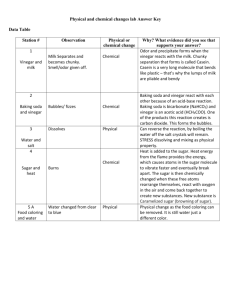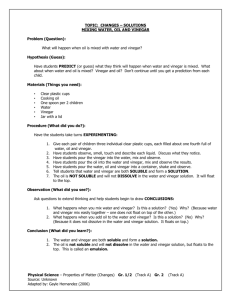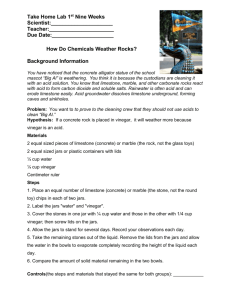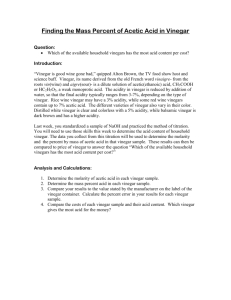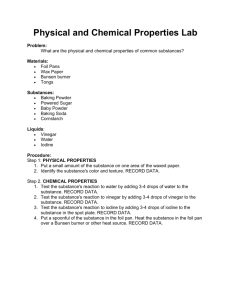Title:枸杞中類胡蘿蔔素、類黃酮及多醣體的萃取及抗氧化活性測定
advertisement
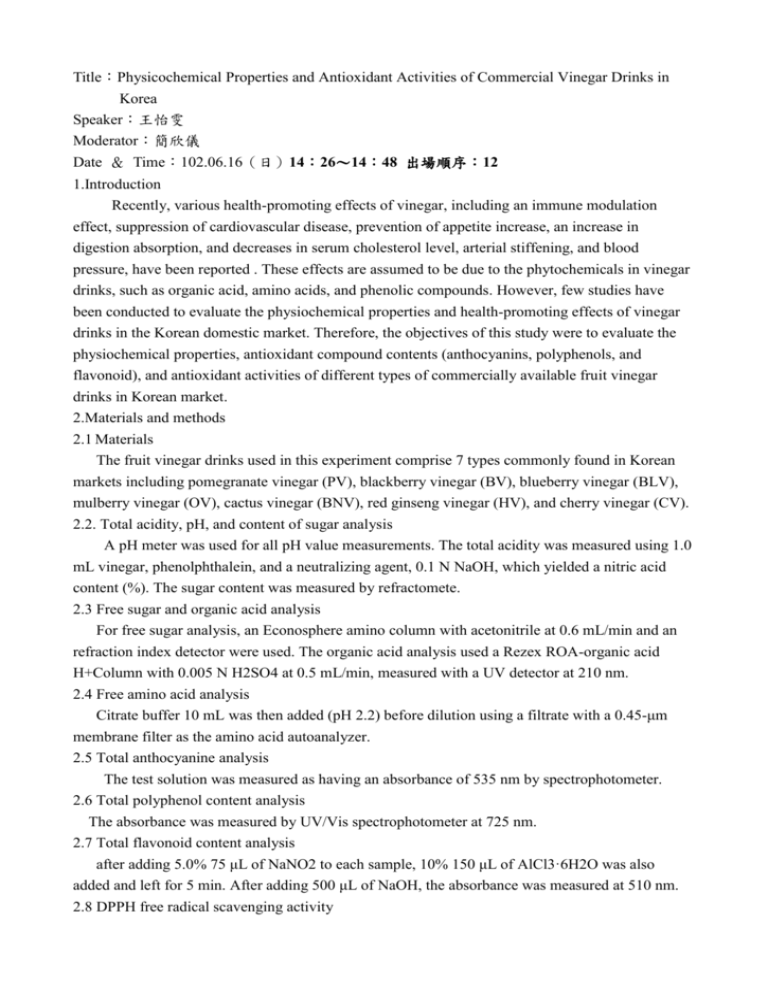
Title:Physicochemical Properties and Antioxidant Activities of Commercial Vinegar Drinks in Korea Speaker:王怡雯 Moderator:簡欣儀 Date & Time:102.06.16(日)14:26〜14:48 出場順序:12 1.Introduction Recently, various health-promoting effects of vinegar, including an immune modulation effect, suppression of cardiovascular disease, prevention of appetite increase, an increase in digestion absorption, and decreases in serum cholesterol level, arterial stiffening, and blood pressure, have been reported . These effects are assumed to be due to the phytochemicals in vinegar drinks, such as organic acid, amino acids, and phenolic compounds. However, few studies have been conducted to evaluate the physiochemical properties and health-promoting effects of vinegar drinks in the Korean domestic market. Therefore, the objectives of this study were to evaluate the physiochemical properties, antioxidant compound contents (anthocyanins, polyphenols, and flavonoid), and antioxidant activities of different types of commercially available fruit vinegar drinks in Korean market. 2.Materials and methods 2.1 Materials The fruit vinegar drinks used in this experiment comprise 7 types commonly found in Korean markets including pomegranate vinegar (PV), blackberry vinegar (BV), blueberry vinegar (BLV), mulberry vinegar (OV), cactus vinegar (BNV), red ginseng vinegar (HV), and cherry vinegar (CV). 2.2. Total acidity, pH, and content of sugar analysis A pH meter was used for all pH value measurements. The total acidity was measured using 1.0 mL vinegar, phenolphthalein, and a neutralizing agent, 0.1 N NaOH, which yielded a nitric acid content (%). The sugar content was measured by refractomete. 2.3 Free sugar and organic acid analysis For free sugar analysis, an Econosphere amino column with acetonitrile at 0.6 mL/min and an refraction index detector were used. The organic acid analysis used a Rezex ROA-organic acid H+Column with 0.005 N H2SO4 at 0.5 mL/min, measured with a UV detector at 210 nm. 2.4 Free amino acid analysis Citrate buffer 10 mL was then added (pH 2.2) before dilution using a filtrate with a 0.45-μm membrane filter as the amino acid autoanalyzer. 2.5 Total anthocyanine analysis The test solution was measured as having an absorbance of 535 nm by spectrophotometer. 2.6 Total polyphenol content analysis The absorbance was measured by UV/Vis spectrophotometer at 725 nm. 2.7 Total flavonoid content analysis after adding 5.0% 75 μL of NaNO2 to each sample, 10% 150 μL of AlCl3·6H2O was also added and left for 5 min. After adding 500 μL of NaOH, the absorbance was measured at 510 nm. 2.8 DPPH free radical scavenging activity Two mL fresh DPPH solution was mixed with 50 μL of each of the various samples, in a 1-cm path length microcuvette. The mixtures were stored in the dark for 16 min. After the reaction the absorbency was measured at 517 nm using a UV/Vis spectrophotometer. 2.9 ABTS cation radical scavenging activity Diluted ABTS radical cation solution (4 mL) was added to 20 μL of samples. After 60 min, the absorbance was measured at 734 nm on UV/Vis spectrophotometer. 3. Results and discussion 3.1 Total acidity, pH, and content of sugar content The pH values of various vinegar drinks ranged between 2.81 and 3.20, with BV having the lowest value . Total acidity ranged between 1.95-2.34%, with the BLV having the highest value. 3.2 Free sugar and organic acid content Fructose and glucose were both present in the fruit vinegar drinks, with content varying by vinegar drinks. The reason for the high acetic acid ratio in the OV is most likely related to its relatively low citric acid content, compared to that in other vinegar drinks. Thus ratio of acetic acid to total acid is in inverse proportion to citric acid and sourness. 3.3 Free amino acids content A total of 18 amino acids were assessed, of which 14 amino acids were detected. Glutamine, histidine, tyrosine, and tryptophan were not present in the various vinegar drinks. In all vinegar drinks, very high glutamic acid content was found. 3.4 Total anthocyanine content The total anthocyanin content was highest in the BV (13.21 mg%), and lowest in that of HV (0.06 mg%). The total anthocyanin content varied significantly by various vinegar drinks, but was in general high in the berry-based vinegar drinks. 3.5 Total polyphenol content Total polyphenol content was highest in the BV (87.25 mg/100 mL), and lowest in that of HV (38.06mg/100 mL). 3.6 Total flavonoid content BV had the highest total flavonoid value of 51.12 mg/100 mL, compared to the lowest value of 9.23 mg/100 mL found in the HV. 3.7 DPPH free radical scavenging activity The BV had the highest anti-free radical activity (12.07%), and the HV had the lowest result of 2.49%. 3.8 ABTS cation radical scavenging activity The BV displayed the highest antioxidant activity of 10.98%, and HV had the lowest value of 1.56%.These results are in line with those of total phenol content, similar to thoseof Lee et al. (15). 5.References *1. Sun-Hee Kim, Hyoun-Kyoung Cho, and Han-Seung Shin. Physicochemical Properties and Antioxidant Activities ofCommercial Vinegar Drinks in Korea. Food Sci. Biotechnol. 21(6): 1729-1734 (2012) 2.培養模式與條件對紅茶菇菌種活性、抗氧化力及茶多酚量之影響

